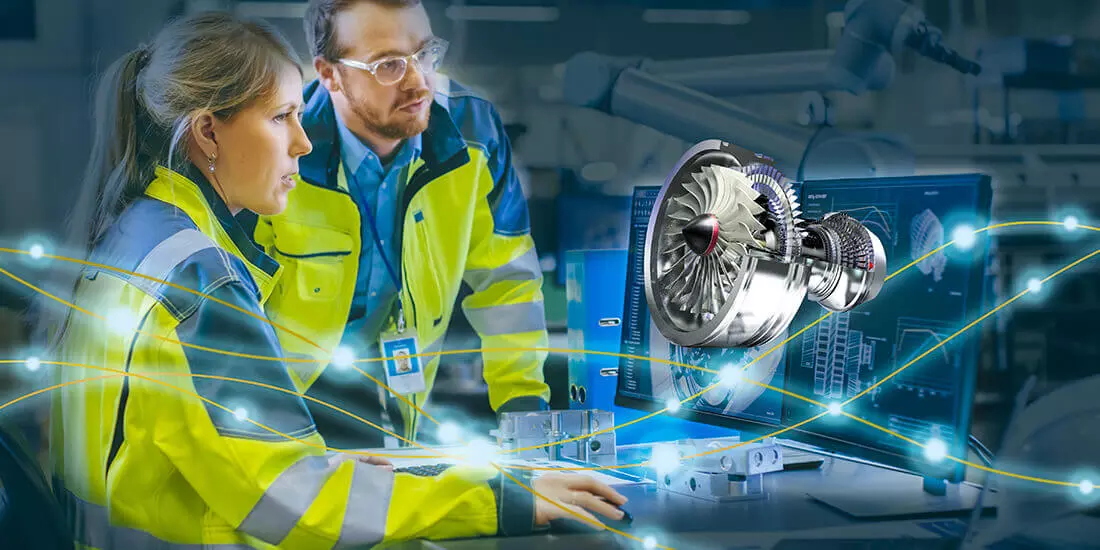Comments
- No comments found

The manufacturing industry plays a crucial role in producing components for automobiles, electronics, medical devices, machinery, and other systems.
These components bring ideas to life, transforming them into tangible products. Consider the device you are using to read this article - it likely contains both internal and external manufactured components. The manufacturing industry is continuously evolving at an exponential pace.
In the past, I have extensively researched and written about a remarkable technological advancement that is causing significant disruptions across multiple industries. Today, I want to remind all the forward-thinking leaders that this application is accelerating even faster now and will continue to do so in the future: Artificial Intelligence (AI).
Assuming that AI won't affect your business or organization simply because it hasn't directly impacted you yet is a critical mistake. AI, autonomous machinery, and AI-enabled software and hardware are here to stay. They are certainties for the future, known as Hard Trends.
However, the manufacturing industry's technological changes encompass numerous other Hard Trends that offer valuable insights for adapting and anticipating their strategic impact on your business. I have compiled a collection of 12 such Hard Trend future certainties that are already reshaping the manufacturing landscape.
Here is an updated look into each one:
AI is a type of machine intelligence that encompasses machine learning, deep learning, and cognitive computing. It is now more commonly available as a service, which reduces the initial investment required and saves both time and money when it comes to mundane tasks. It is crucial to remember that these processes are meant to collaborate with humans in groundbreaking ways, rather than working against them or attempting to replace them.
Augmented thinking leverages AI-enabled analytics to deliver immediate and practical human insights, while augmented movement enhances human capabilities. This is the realm where the human aspect of collaborating with AI and different forms of autonomous technology becomes significant. Tasks that were once arduous or unattainable for humans alone can now be accomplished with the assistance of AI applications.
AI and networked motors, actuators, and sensors are already employed in various autonomous technologies to automate diverse functions. Semiautonomous technologies, on the other hand, combine human input with predefined parameters to grant autonomous functions a level of control. Similar to the progress in augmented thinking and augmented movement, individuals involved in manufacturing will evolve into troubleshooters and critical thinkers responsible for maintaining the operational efficiency of AI applications.
The rising popularity of smart e-assistants and chatbots extends across professional industries. This familiar form of AI technology, exemplified by Siri and Alexa in our personal lives, is swiftly finding its way into the manufacturing sector through application bots. In the manufacturing workspace, one can observe the presence of Siri-like virtual assistants on various machinery, leveraging intelligent sensors to gather real-time data and anticipate mechanical issues. This integration enhances productivity by enabling proactive measures.
Big Data is a phrase that encompasses technologies employed to capture and harness the exponentially growing data from diverse sources. Edge computing, a process that involves analyzing data in close proximity to its origin, facilitates fast and efficient data processing and implementation. In the manufacturing sector, where an immense volume of data is generated daily, AI applications leverage this data to provide enterprise-wide visibility and valuable insights. This empowers users to swiftly make crucial decisions based on accurate information.
Businesses are poised to adopt different forms of cloud computing applications, including public, private, hybrid, and personal clouds. This shift in software, hardware, and computing capacity acquisition and maintenance not only reduces costs but also expedites IT processes. The integration of innovative cloud computing platforms and services with AI applications enables rapid product creation, service development, and market exploration across diverse industries.

Businesses are increasingly adopting the virtualization of software and hardware to enhance cybersecurity measures, leveraging Hardware as a Service (HaaS) and Software as a Service (SaaS) models to establish "IT as a Service" environments. With the ongoing growth of virtualized processing power, mobile devices are transforming into powerful supercomputers, fostering innovation within the manufacturing sector. Envision the remarkable advancements that will unfold when AI-enabled applications seamlessly integrate with these streamlined services!
The rapid adoption of cloud-based platforms expedites the virtualization of processes, facilitating the efficient updating and deployment of new services. This trend has extended to diverse applications in various industries, such as Videoconferencing as a Service, Collaboration as a Service, and HR as a Service. Consider the possibilities when AI as a Service becomes accessible, lowering entry costs for manufacturers to integrate autonomous technology into their operations!
Augmented reality (AR) presents a distinct form of digital disruption, enabling users to utilize a digital camera to superimpose real-time information onto objects. On the other hand, virtual reality (VR) offers a complete immersion into virtual environments. In the manufacturing industry, AR glasses and VR headsets will increasingly become the standard, enabling wearers to troubleshoot machinery on-site or work remotely in a field traditionally dependent on on-site presence.
Additive manufacturing processes, commonly referred to as 3D printing, have become an essential component in numerous industries, particularly in light of existing and persistent challenges in the global supply chain. Initially intended for prototyping purposes, 3D printers now play a crucial role in producing various products such as automotive lighting components, medical equipment, smartphone cases, jet engines, buildings, and notably, prosthetic limbs. In essence, this technology enables companies to swiftly manufacture items while reducing overhead expenses and shortening lead times.
The expansion of the Internet of Things (IoT) will be propelled by machine-to-machine communications, facilitated by chips, microsensors, and wired or wireless networks. This integration of networked sensors will enable the sharing of real-time data and the execution of diagnostics and repairs with minimal human intervention. Consequently, the Internet of Everything (IoE) will gain further momentum. With this evolution, edge computing will also witness significant growth, consolidating the data generated by IoT and IoE. This, in turn, will deliver instant insights and enable on-the-spot actions at the point of use.
The rapid and responsive 5G connectivity, with the upcoming certainty of 6G networks, empowers manufacturers to establish secure and swift public or private 5G networks within their operations. The availability of connectivity worldwide continues to expand, reinforcing the trend of virtualizing the workplace and propelling us towards a more interconnected and efficient global society.
Are you interested in delving into these and other future certainties that will shape the manufacturing industry? Don't miss out on transforming your business with the power of Artificial Intelligence. Download Daniel Burrus' groundbreaking report now and revolutionize your workflow with advanced AI tools. Discover next-level productivity, enhance efficiency, and stay ahead of the curve. Make your future unstoppable, click here to download today!"
Daniel Burrus is considered one of the world’s leading futurists on global trends and innovation. The New York Times has referred to him as one of the top three business gurus in the highest demand as a speaker. He is a strategic advisor to executives from Fortune 500 companies, helping them to accelerate innovation and results by develop game-changing strategies based on his proven methodologies for capitalizing on technology innovations and their future impact. His client list includes companies such as Microsoft, GE, American Express, Google, Deloitte, Procter & Gamble, Honda, and IBM. He is the author of seven books, including The New York Times and Wall Street Journal best-seller Flash Foresight, and his latest book The Anticipatory Organization. He is a featured writer with millions of monthly readers on the topics of innovation, change and the future and has appeared in Harvard Business Review, Wired, CNBC, and Huffington Post to name a few. He has been the featured subject of several PBS television specials and has appeared on programs such as CNN, Fox Business, and Bloomberg, and is quoted in a variety of publications, including The Wall Street Journal, Financial Times, Fortune, and Forbes. He has founded six businesses, four of which were national leaders in the United States in the first year. He is the CEO of Burrus Research, a research and consulting firm that monitors global advancements in technology driven trends to help clients profit from technological, social and business forces that are converging to create enormous, untapped opportunities. In 1983 he became the first and only futurist to accurately identify the twenty technologies that would become the driving force of business and economic change for decades to come. He also linked exponential computing advances to economic value creation. His specialties are technology-driven trends, strategic innovation, strategic advising and planning, business keynote presentations.
Leave your comments
Post comment as a guest